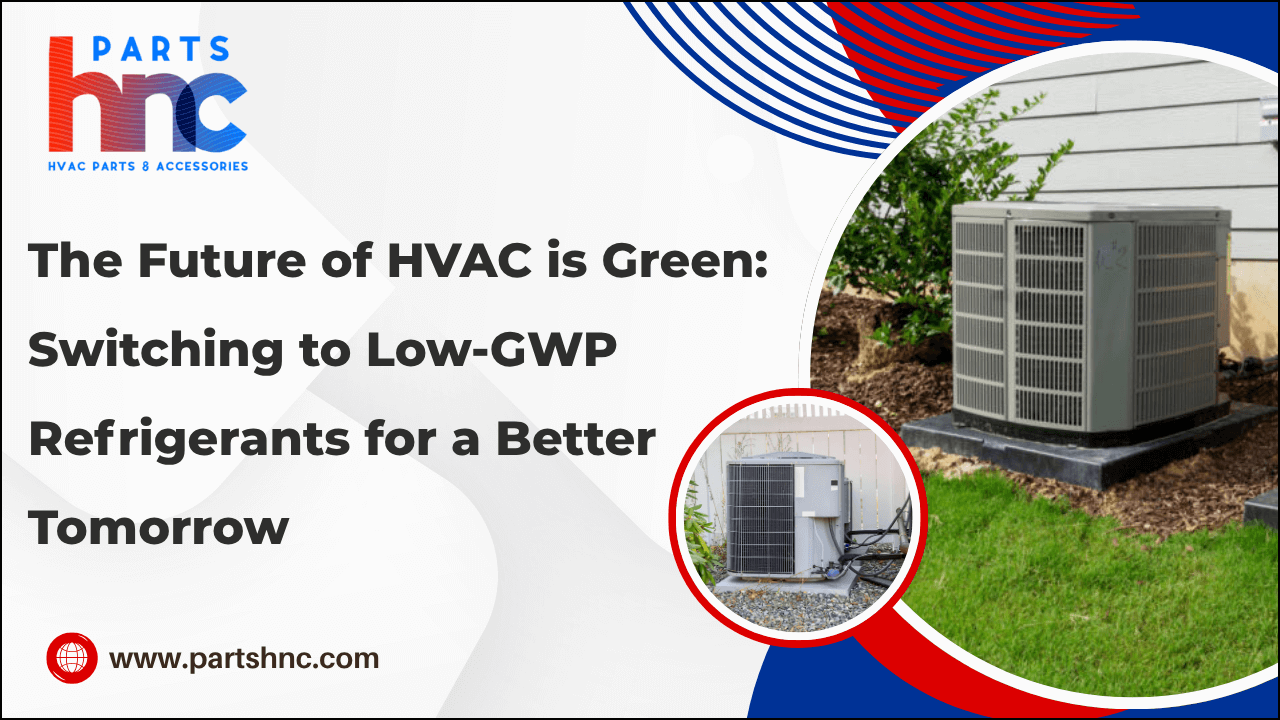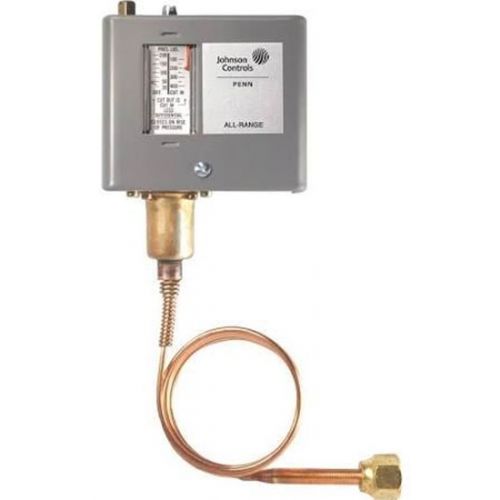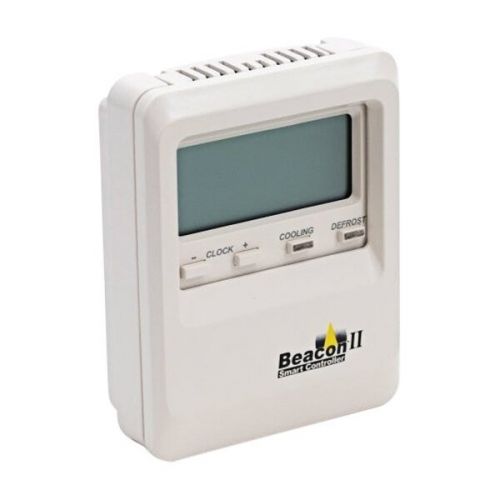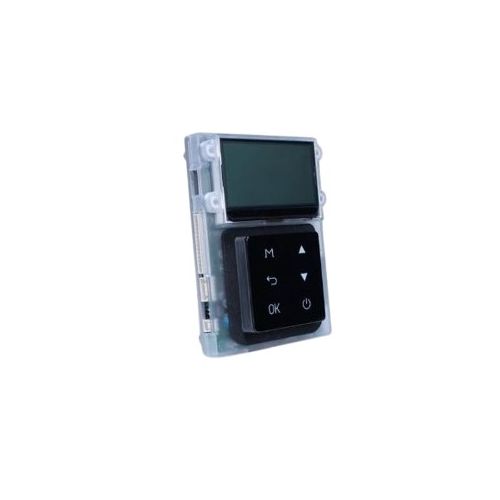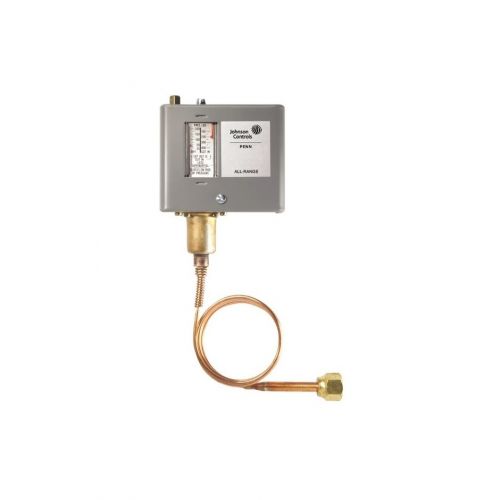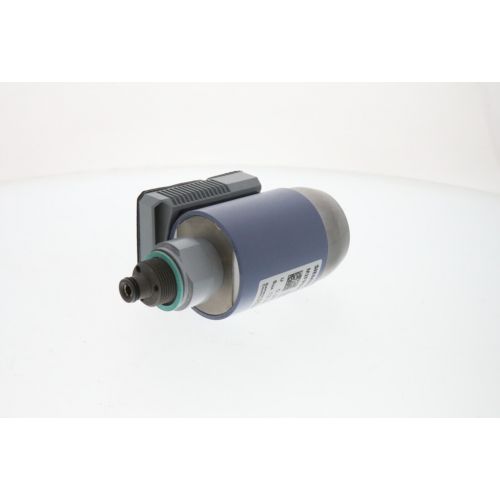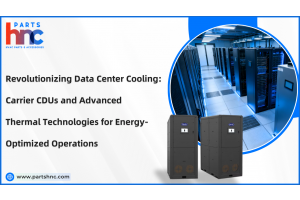The Future of HVAC is Green: Switching to Low-GWP Refrigerants for a Better Tomorrow
The future of HVAC technology is undeniably green, with low-GWP (Global Warming Potential) refrigerants leading the way toward a more sustainable and eco-friendly industry. As global awareness of climate change intensifies, the need to reduce the environmental impact of cooling and heating systems has never been more urgent. Traditional refrigerants, while effective, contribute significantly to global warming when released into the atmosphere. In contrast, low-GWP refrigerants offer an environmentally responsible alternative, significantly reducing carbon footprints without sacrificing performance. This shift is essential not only for compliance with tightening regulations but also for embracing a cleaner, more sustainable future. In this article, we’ll explore the importance of adopting low-GWP refrigerants in HVAC systems and how this transition benefits both the planet and the industry.
Understanding GWP and Its Impact on Climate Change
The impact of greenhouse gases on the environment is measured by the Global Warming Potential (GWP). A higher GWP means a substance contributes more to global warming. Refrigerants with high GWP are thousands of times more harmful than CO₂.
-
As a baseline for comparison, carbon dioxide (CO₂) has a GWP of 1.
-
Some refrigerants have a GWP of several thousand, making them significantly more harmful than CO₂.
-
High-GWP refrigerants can be thousands of times more damaging to the atmosphere than CO₂, exacerbating the effects of climate change.
-
In HVAC systems, refrigerants are necessary for temperature control, cooling, and heat transmission. However, when released into the environment, conventional refrigerants like R-22 (HCFC-22) and R-410A have high greenhouse gas potential (GWP) and cause global warming.
-
Impact on the ozone layer: These refrigerants not only damage the ozone layer but also trap heat in the atmosphere, further intensifying global warming.
-
Reducing the GWP of refrigerants used in HVAC systems is essential to minimizing the adverse environmental effects as the demand for air cooling and refrigeration rises internationally.
-
Low-GWP refrigerants are an essential part of the solution, offering a way to continue benefiting from HVAC systems without further harming the environment.
Check out heating up sustainability: eco-friendly HVAC solutions for a greener world to evaluate how refrigerants impact climate change.
The Environmental Impact of Traditional Refrigerants
For decades, refrigerants like R-12, R-22, and R-410A were the go-to choices in HVAC systems. However, the environmental toll of these chemicals has become increasingly apparent. Traditional refrigerants, especially HFCs and HCFCs, have a high GWP, meaning they are potent contributors to climate change.
High GWP Example:
-
Refrigerators and air conditioners frequently use R-22 (HCFC-22).
-
It has a GWP of 1,810, meaning 1 ton of R-22 has the same warming effect as 1,810 tons of CO₂. This makes leaks or emissions from HVAC systems extremely harmful to the climate.
Global Scale of Use:
-
HVAC systems are used globally across residential, commercial, and industrial sectors, increasing the overall impact of high-GWP refrigerants.
Ozone Depletion:
-
Many older refrigerants, like R-22, are also ozone-depleting substances (ODS).
-
The ozone layer, which shields humans from dangerous UV radiation, is harmed by these chemicals.
Regulatory Phase-Out:
-
R-22 was phased out under a global agreement to eliminate ozone-depleting chemicals.
Rise of HFCs:
-
The phase-out of HCFCs led to the adoption of HFCs (e.g., R-134A, R-410A).
-
HFCs have a high GWP and contribute to global warming even if they don't damage the ozone layer.
Benefits of Switching to Low-GWP Refrigerants
Switching to low-GWP refrigerants offers numerous advantages for both the environment and businesses. These benefits go beyond simply reducing emissions, making low-GWP refrigerants a crucial step for sustainable HVAC systems.
Reduced Environmental Impact:
-
The carbon footprint of low-GWP refrigerants is substantially lower than that of conventional refrigerants.
-
By reducing their contribution to global warming, they aid in slowing the pace of climate change.
-
By minimizing the release of high-GWP chemicals, these refrigerants play a key role in reducing greenhouse gas emissions.
Compliance with Global Regulations:
-
International agreements, such as the Kigali Amendment, push for a reduction in HFC usage.
-
Companies may guarantee adherence to present and future environmental standards by converting to low-GWP refrigerants.
-
Manufacturers can stay ahead of regulatory changes and avoid penalties by taking this proactive approach.
Energy Efficiency:
-
Many low-GWP refrigerants offer better energy efficiency than high-GWP alternatives.
-
These refrigerants can improve HVAC system performance, leading to reduced energy consumption.
-
This eventually leads to significant long-term energy savings and decreased operating expenses.
Market Differentiation and Consumer Appeal:
-
Adopting green technologies helps firms stand out as consumers and businesses alike prioritize sustainability.
-
Demonstrating a commitment to environmentally friendly practices can improve brand image and attract eco-conscious consumers and partners.
-
Companies that switch to low-GWP refrigerants may gain a competitive edge in the growing green marketplace.
Check out this eco-friendly HVAC solution to learn more about commercial HVAC systems.
Challenges and Considerations in Adopting Low-GWP Refrigerants
While the transition to low-GWP refrigerants is essential, it does come with several challenges. Businesses must carefully address these considerations to ensure a smooth switch.
Technical Compatibility:
-
Many existing HVAC systems were originally designed to use high-GWP refrigerants.
-
Transitioning to low-GWP alternatives requires careful compatibility checks.
-
Some systems may require retrofitting or significant upgrades to accommodate the new refrigerants effectively.
-
Important parts like compressors or heat exchangers may need to be replaced during this procedure.
Cost of Transition:
-
Initial costs for upgrading to low-GWP refrigerants can be high due to the need for new equipment or system modifications.
-
There may be extra expenses associated with retrofitting older systems to make sure they are compatible with the new refrigerants.
-
The long-term benefits from increased energy efficiency and regulatory compliance can balance out the original costs, even though the initial expenditure may be substantial.
-
Companies that implement sustainable technologies may potentially be eligible for tax breaks or incentives.
Training and Certification:
-
HVAC technicians must receive specialized training to handle low-GWP refrigerants safely.
-
The shift to low-GWP refrigerants requires knowledge about safe handling, installation, and servicing procedures.
-
Technicians need to be certified to work with these refrigerants, ensuring adherence to safety protocols and reducing the risk of accidents or refrigerant leaks.
Innovations Driving the Next Generation of HVAC Systems
The HVAC industry is changing quickly because to creative solutions that prioritize energy efficiency and sustainability. Greener HVAC systems of the future are being shaped by the following technologies:
Natural Refrigerants:
-
CO₂ (R-744), ammonia (R-717), and hydrocarbons (R-290 and R-600a) are gaining popularity as low-GWP alternatives to traditional refrigerants.
-
These refrigerants have a GWP of less than 1, making them much more environmentally friendly than synthetic refrigerants.
-
Natural refrigerants offer excellent thermodynamic properties, leading to more energy-efficient HVAC systems.
-
They can be utilized for a variety of purposes, including commercial and industrial cooling, and they are non-toxic and non-flammable.
Magnetic Refrigeration:
-
Magnetic refrigeration uses a magnetic field to cool instead of relying on traditional refrigerants.
-
This technology is a green cooling solution because it does not use refrigerants.
-
Magnetic refrigeration has the potential to completely transform the HVAC sector, even if it is still in the experimental stage.
-
This technology could offer significant improvements in energy efficiency and environmental impact by reducing refrigerant dependency altogether.
Smart HVAC Systems:
-
Advances in smart HVAC technology allow for more precise control of refrigerant flow, improving system efficiency.
-
These systems can monitor real-time data and adjust performance accordingly to optimize energy use and refrigerant management.
-
Smart thermostats and sensors contribute to more efficient operation by reducing waste and ensuring that HVAC systems run only when needed.
-
With AI-powered analytics, these systems can predict maintenance needs, minimizing downtime and improving overall system lifespan.
-
Ongoing education and certification updates are crucial as new refrigerants and regulations emerge.
Limited Availability:
-
Although low-GWP refrigerants are becoming more accessible, they may still be limited in availability for certain HVAC applications.
-
Some refrigerants may not be compatible with specific system designs, leading to a challenge in finding the right solution.
-
Supply chain constraints could also create issues in procuring the necessary refrigerants in time for system upgrades.
Check out embrace the future: new refrigerants in HVAC systems for a sustainable new year to understand more sustainable and energy-efficient solutions.
A crucial step in combating climate change is the HVAC industry's transition to low-GWP refrigerants. The HVAC industry can contribute significantly to the development of a better future by lowering the environmental impact of refrigerants and adopting cutting-edge, sustainable solutions. While challenges remain, the benefits of switching to low-GWP refrigerants, such as reduced emissions, energy efficiency, and regulatory compliance, make it clear that the transition is not only necessary but also advantageous. As consumers and businesses become increasingly eco-conscious, the adoption of low-GWP refrigerants will be key to staying competitive and meeting the demands of a sustainable future. The green HVAC revolution is here, and it’s time for the industry to embrace it for a better tomorrow.
Ready to make your HVAC system more sustainable? PartsHnC offers a range of low-GWP refrigerants and cutting-edge components like R-32 refrigerant, A/C compressors, thermostatic expansion valves, and pressure gauges to help you stay ahead of environmental regulations. With trusted brands like Trane, Honeywell, Daikin, and Carrier.
FAQs
What is the new refrigerant for 2025 HVAC?
Transition to New Refrigerants. For those looking to install a new system or replace an existing one, the new regulations mean that you'll be purchasing a unit that runs on R-454B or a similar low-GWP refrigerant
Which refrigerant is being phased out by 2030?
R-22 is an HCFC refrigerant that is often used in air-conditioning equipment. To protect the Earth's protective ozone layer, the United States is phasing out R-22, along with other chemicals.
Why is R-32 refrigerant banned?
R-32 refrigerant is not banned, but is being phased out in some regions as part of efforts to reduce greenhouse gas emissions.


